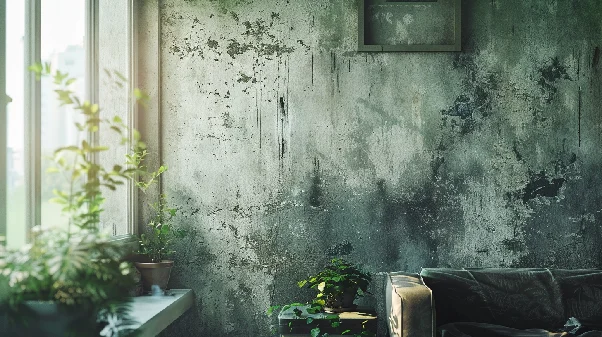Recognizing and Addressing Symptoms of Mold Exposure
Recognizing and Addressing Symptoms of Mold Exposure

Exposure to mold can trigger a range of symptoms that may seriously affect your health and well-being. Mold can grow in damp, warm environments that encourage its spread throughout your home. Often identified by teams of specialists, mold-related symptoms tend to be subtle and hard to pinpoint without proper indoor air testing.
In this article, we’ll look at the most common signs of mold exposure, why some people are more vulnerable than others, and the steps you can take to prevent mold-related illness.
Learn how to protect your indoor space from these microscopic fungi and maintain a healthy home for you and your loved ones.
Key signs of mold exposure to look out for
Recognizing the symptoms of mold exposure is essential to act quickly and effectively, as mold in your home can cause a wide range of health issues. These signs can vary in both severity and type, depending on the person and the type of mold involved.
Respiratory issues and nasal irritation
Breathing in mold spores can lead to a variety of respiratory symptoms. Mold can cause wheezing and a feeling of tightness in the chest, which are common early signs. Persistent nasal congestion and allergic rhinitis may also occur, often resembling a cold that never quite goes away.
Chronic fatigue and unexplained headaches
Ongoing tiredness that doesn’t improve with rest could point to long-term mold exposure. Frequent headaches—especially ones that worsen in certain spaces—are another red flag. While these symptoms can be vague, they shouldn’t be ignored.
Skin irritation and allergic reactions
Mold allergies can also show up on the skin. Rashes, itching, or dry, flaky skin may develop after contact with mold. In some cases, individuals experience hives or more intense allergic reactions when exposed to spores.
Possible neurological and cognitive effects
In cases of prolonged exposure, mold may affect the nervous system. Difficulty concentrating, short-term memory loss, or even unexplained mood changes can appear. Though less common, these symptoms are particularly concerning and worth investigating.
Why are some people more vulnerable to mold?
Mold sensitivity varies greatly from person to person. Understanding these differences is key to identifying those most at risk and putting proper safeguards in place.
At-risk groups: children, seniors, and immunocompromised individuals
Children are more vulnerable to the toxic effects of mold due to their developing immune systems. Older adults are also at higher risk, as their natural immune defenses weaken over time. People with compromised immune systems—whether due to chronic illness or immunosuppressive treatments—face an increased risk of serious health complications.
How mold exposure worsens respiratory conditions
People with existing respiratory issues such as asthma or chronic bronchitis may experience more frequent or severe flare-ups when exposed to mold. This can sometimes require adjustments to their regular treatment plans.
Where mold hides in your home

Knowing where mold is likely to grow is key to preventing its spread. Below is a quick guide to areas in your home that deserve extra attention:
| Area of the home | What to check | Warning signs |
|---|---|---|
| Bathroom | Shower grout, under bath mats | Black spots, musty smell |
| Kitchen | Under the sink, behind the fridge | Signs of moisture, surface discolouration |
| Basement | Walls, floors, stored items | Earthy odour, stains on walls |
| Attic | Insulation, roof structure | Darkened wood, damp insulation |
| Windows | Frames, sills | Condensation, green or black marks |
How to prevent mold-related illness

Prevention is your best defense against mold. Simple yet effective steps can significantly lower your risk of exposure and protect your health.
Ventilation and indoor humidity control
Proper airflow is crucial to stopping mold growth in your home. Make sure to air out your home daily, even during winter, for at least 15 minutes. In damp areas like basements, dehumidifiers can help keep indoor humidity between 30% and 50%, which is ideal for preventing mold.
Cleaning habits that help keep mold away
Regular and thorough cleaning is essential. Pay close attention to moisture-prone spots like bathrooms and kitchens. Dry wet surfaces right away and fix any water leaks quickly. Air quality testing can help detect spores early before they spread.
Natural solutions to treat small mold problems
For small areas, natural remedies can work well. White vinegar diluted 50/50 with water is a powerful and safe mold treatment. Tea tree oil, known for its antifungal properties, can also be added to your cleaning routine for added protection.
What to do if you’re showing signs of mold exposure
If you suspect mold exposure, it’s important to act quickly to protect your health and your family’s. Here are the key steps:
-
See a doctor promptly to assess your symptoms and get a proper diagnosis
-
Locate and remove the mold source in your home—ideally with the help of a professional mold inspector
-
Improve ventilation by installing appropriate airflow systems
-
Clean affected areas thoroughly using the right products and wearing protective gear
-
Monitor your home regularly to prevent mold from returning
-
Consider long-term changes to reduce moisture and improve air circulation indoors
By staying alert and following these steps, you can maintain a healthy living space and reduce the risks linked to mold. Don’t let mold threaten your well-being—take action today and build a safer, cleaner home environment!